post in : comic , Vintage Paper| Tagged : pulps , spicy account stories
The story behind farsighted run fable magazine 10 Story Book runs through a number of Chicago paper and business institutions .
accord to a 1906 overview of the history of fiction - focused periodical publishing in Chicago , the rising of Chicago - based literary story papers such as theChicago Ledgerand theSaturday Bladewas fuel in part by the climb of mail - order catalog - based retail giants in that city and their advertizing needs . celebrated names like Sears , Roebuck and Co. & Montgomery Ward and Co. have their roots in Chicago , but it ’s the people behind the lesser - call up Chicago Mail Order Company that may have had the most interesting and direct impact on periodical fiction issue history in America . FounderBenjamin J. Rosenthal(1867 - 1936 ) and the partners behind that party would soon become tangled in a fiction - publishing newspaper family and their own historically important fiction magazines . Chicago Mail - Order Company even became a footer to comical playscript history during the Golden Age . That journeying begin with the Daily Story Publishing Company and the literary periodical10 Story Book . In later X , the title became known as part of the racy flesh family , but it launched with different purpose in thinker .
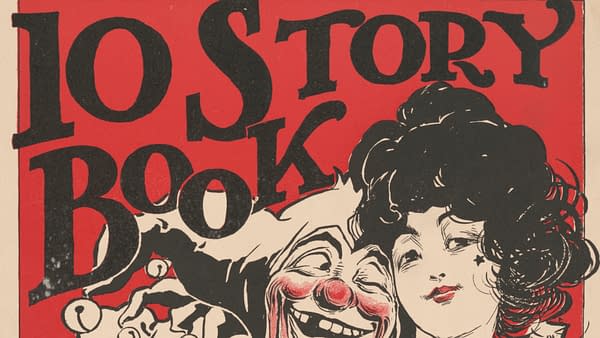
As most of theseSpicy History Storiesarticles tend to do , this piece has spawled well beyond what it was intended to be . The original idea was to dig into the little - documented origins of Sun Publications , well think back for its incumbency in publishing10 Story Bookand the dead - lived historical pulpGolden Fleece . But that head to an even more isolated and fascinating taradiddle of the Chicago businessmen who originally financed10 Story Book , and how that resulted directly in the launching of crucial fiction magazinesRed Book , Blue Book , andGreen Book .
And with that , it ’s prison term forSpicy History tarradiddle # 6 , the sixth installment of a hebdomadary pillar about flesh powder store story that we ’ve launched to coincide with Heritage Auction’sweekly mush powder store auction bridge . Unlike other auction - centrical postal service we ’ve done here , this column is not necessarily designed to be tight tie to any particular item up for vendue . Mostly , it ’s this : if you savour the nerdy details of risible rule book chronicle , you ’re depart to love the dumfounding ( and yes , sometimes eldritch ) history of the people and companies that made the pulp .
Most histories go steady the founding of the Chicago Mail Order Company to 1889 , the year Rosenthal bequeath Gage Brothers & Co. to launch his own woman’s hat business . PartnersLouis Eckstein , Louis M. Stumer , andAbraham R. Stumerjoined the firm by 1891 . The mate ' initial major commercial enterprise launch wasThe Emporiumin Chicago that twelvemonth . Various aspects of the partnership businesses then evolved to include Chicago Mail Order Company by the twist of the century , while the partnership firm of Stumer , Rosenthal & Eckstein also became involve in other retail business , restaurants , and actual estate endeavors in Chicago . The North American buildingin Chicago is one of their most historically famous development undertaking .
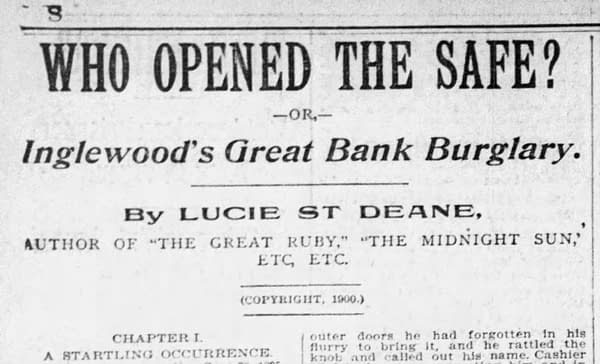
The Daily Story Publishing Company
Benjamin J. Rosenthal ’s acquaintance withChicago Inter - OceanandChicago Tribunenewspaper reporterDwight Allynwould chair the partnership down the pulp publishing path . A veteran newsperson whoseexperiences as a field of battle correspondentand crush connections in Chicago left him well conversant with newspaper family operations , Allyn set up the Daily Story Publishing Company with$5000 worth of backingfrom other reference in November 1899.Allyn ’s usable partner and first editor at the company was a veteran newsman with thick ties to Chicago ’s literary scene , James S. Evans . Evans had made a brand as a reporter in a number of states before come in to national notice for his insurance coverage of the 1892 U.S. presidential military campaign for theNew York Sun . In Chicago , Evans had worked asa literary agentas well ascontributing serial fictionto theChicago Tribune . His time at the Daily Story Publishing Company was abruptly - lived , as he had returned to coverage by 1902 , this time for theNew Orleans Times - Democrat .
The approximation of the Daily Story Publishing Company was to syndicate fiction instead of news or more general stuff to daily newspapers , in an geological era when such fiction in newspapers was plebeian . Literary syndicates were not a novel concept in 1899 , but they were still in their comparatively shaping early long time in America . technological cash advance in the American railing connection and printing engineering science over the period of 1860 - 1900 resulted in an explosion in demand for cheap fabrication and periodicals that impress fabrication to fulfill that demand . Story newspaper , quarto libraries and weeklies , and other dime novel fabrication - focused periodical formats were on the rise , and so were the telephone number of news , powder magazine , and general interest formats that admit or featured fiction . This included newspapers , which commonly included some fable . fit in toFiction and the American Literary Marketplace and the Role of Newspaper Syndicates in America , 1860 - 1900 , byCharles Johanningsmeier , the turn of daily newspapers in the U.S. increased from 387 to 2,226 over that menstruum . This kick in rise to increase expectation about mental object from newspaper readers , which in turn caused the upgrade of newspaper syndicates that could provide fabrication .
While various method of syndication had been done in some specific circumstances prior to the 1860 - 1900 period , Ansel Nash Kellogg ’s use of goods and services of the method acting that amount to be call " patent inside " or " readyprint " begin in 1861 came at the correct fourth dimension to gain traction . Kellogg moved to Chicago and started the A. N. Kellogg Newspaper Publishing Co. in 1865 , becoming a important power in paper syndication ’s early years in America . Using this method , a portion of a newspaper could be printed at a cardinal location and then institutionalise by rail to the publishing company for printing their local content . This give way to syndicates sending stereotype plates to guest newspapers as well . Per Johanningsmeier , some syndicates also offered the availability of galley proof of their material to target declamatory paper after the rise of Linotype automobile in the later eighties . This method would also become useful for fiction - focused syndicates due to the small-scale amount of fabric they sometimes offer .
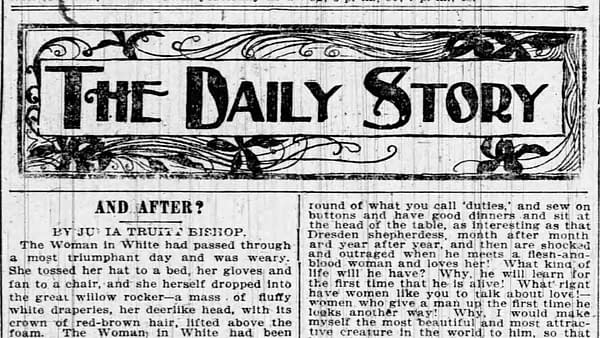
serialise Fiction in the Victorian PressbyGraham Lawnotes that fiction syndication to newspaper publisher start to scale up in the UK in the former 1870s with the efforts ofWilliam Frederic Tillotsonand his Newspaper Fiction Bureau in England . Tillotson had enter the U.S. grocery store by the early 1880s ( which propose specific operational challenge for extraneous authors both before and after the Copyright Act of 1891 ) , while Johanningsmeier speculates that Tillotson ’s 1884 sojourn to America spur a number of U.S. firm to syndicate fabrication . These included newspaper - operate syndicates such as theNew York Sun , and theBoston Globe , as well asSamuel Sidney McClure ’s Associated Literary Press . Closer to home for Dwight Allyn and the Daily Story Publishing Company , the American Press Association was founded in Chicago in 1882 , and by the time it began including fabrication in its oblation in the early 1890s , it was one of the country ’s predominant syndicate .
Despite the competitor in this niche , the Daily Story Publishing Company seems to have found its footing in its other days of mathematical process in the first one-half of 1900 . Evans ' connection to American authors and within the newsprint manufacture around the country seemed to make for a virile compounding .
American Press Association v Daily Story Publishing Company
But trouble come forth for Daily Story from the outset . Within the first few twenty-four hour period of military operation in January 1900 , one client paper , theSt . Louis Globe - Democrat , put out Daily Story cloth without its copyright observation as they were contractually required to do . Notice of right of first publication was ask by the copyright jurisprudence of that era in club to benefit from copyright auspices , and it was common practice for newspapers and crime syndicate to crib material that was not copyright . Believing the story to be just secret plan , the American Press Association syndicate vacate it for distribution to its own client newspapers .
This case of situation was an existential scourge to Daily Story , or many such syndicates for that matter . Full - service syndicate such as the American Press Association normally get off out material in the form of stereotype plates , thus sidestepping this likely problem , but with its short fiction - only focus , Daily Story was not in a position to do that . This meant they had to swear on their many client newspapers to correctly fulfill this requirement .
In October 1901 , Daily Story sued the American Press Association for $ 2,000 , alleging right of first publication infringement , and also stating theirintention to litigate American Press Association node . The American Press Association countersued in an attempt to keep Daily Story from going after their guest . They maintain they had a right to syndicate the material due to the lack of right of first publication notice in one paper , and sought to prevent Daily Story from seeking wrong from its client newspaper . In early June 1901 , the court of law adjudicate in Daily Story ’s favor , determining thatSt . Louis Globe - Democrat ’s erroneous belief did not invalidate Daily Story ’s copyright protection . The case was appealed , but the decision was ultimately maintain . It became part of a larger conflict during this geological period toclarify right of first publication issuessurrounding syndicate subject matter in newspaper ( see also Tribune Co. of Chicago v. Associated Press , 1900 ) .
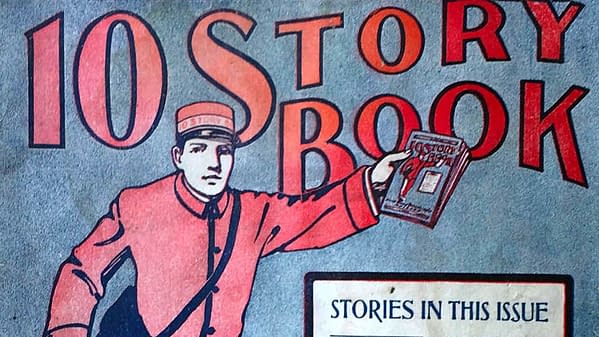
The10 Story BookExperiment
Despite the effectual wrangling , Daily Story ’s fiction syndication byplay continued to build its leaning of client newsprint during 1901 , and plan were made early on that year to spin off the resist - alone periodical10 Story Book . The concept in theory was that10 fib Bookwould contain fiction submitted to Daily Story that was undesirable for paper syndication .
The original group of Daily Story backers had been anchored by Chicago attorney and investorLouis M. Cahn , but the developments of 1901 and the launch of10 Story Bookwould expect more capital . Stumer , Rosenthal & Eckstein bought breed in the company and may have bought out the original investors entirely . The exact timing of this investment in 1901 is not clean-cut , but soon before or after the debut of10 Story Bookis most potential . The first egress gain the streets of Chicago within days of the American Press Association v Daily Story Publishing Company homage decision , and they were launching the title without advertising or a distributor .
InMagazines of a Market - Metropolis : Being a History of the Literary Periodicals and Literary Interests of Chicago , a dissertation done at the University of Chicago in 1906 byHerbert E. Fleming , the launching of10 Story Bookis chronicled in some particular : " The first issue of 10,000 was tried on the Chicago public only . The story - Bible were placed in the hands of sixty boys fitted out in strike red coats and snowy trouser [ author ’s musical note : these uniforms would seem to explainthe artwork on the early covering fire ] . The boy hawked them from the street corner in the loop territorial dominion until stop by the police . But that was not until gross revenue had proved Chicago to have in its population a large class of people concerned in fresh stories . The Western News Co. cry on the publishers for further issues , a post - office entry was made , and the Daily Story Publishing Co. began the periodic publishing of the10 Story Bookfor the general fabrication powder magazine securities industry . "
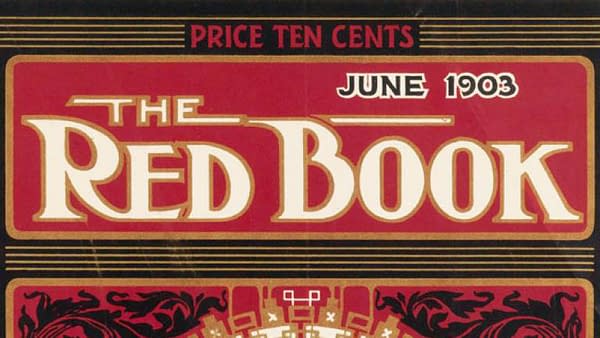
But it would come along that Daily Story made the conclusion comparatively early on to accept some types of defer history outside of those parameters , or to seek them out . As Fleming note from his 1906 position : " In its aid to the unique , weird , and bizarre subject and the mystery in detective tales the10 Story Bookwas at first regard as an caricature of that periodical ' devoted only to original , unusual , riveting stories ' publish in Boston — theBlack Cat . But through the years it has budded some offshoots from the principal branch of studied originality . ' An emotion with every chronicle ' is one of the mottoes of those direct the periodic . While the stories are not indecent , the coach honestly read that he is not overnice . Although the fib are not positively risque , in many of them intimate passion supply the theme for human interest . "
Given that the name of10 Story Bookpublisher Daily Story Publishing Company was so similar toBlack Catpublisher Shortstory Publishing Company ’s name that theywere sometimes baffled , it ’s hard not to wonder if this was the butt from the very beginning of the society . But both10 Story BookandBlack Cat , among other pamphlet - format literary periodical , were inspired in part byThe Chap - Book(1894 - 1898 ) , founded by Harvard studentsHerbert StoneandIngalls Kimball . Stone & Kimballmoved to Chicagoin August 1894 , where Herbert ’s fatherMelville Elijah Stonehad founded theChicago Daily News . Melville Elijah Stone also became the general director of the Associated Press in 1893 . The business narrative behindThe Chap - Bookwould have been well get laid to Chicago newspaper publisher estimate Allyn and Evans .
Chicago historianEdward SharpinMagazine Publishing in Chicagonotes that in that metropolis aloneThe Chap - Bookinspired emulator includingBlue Sky(1899 - 1902 ) andFour O’Clock(1897 - 1902 ) before the launch of10 Story Book , and many more nationally . Nevertheless,10 Story Bookwould presently carve out its own unequalled identityand attain former winner in the process .
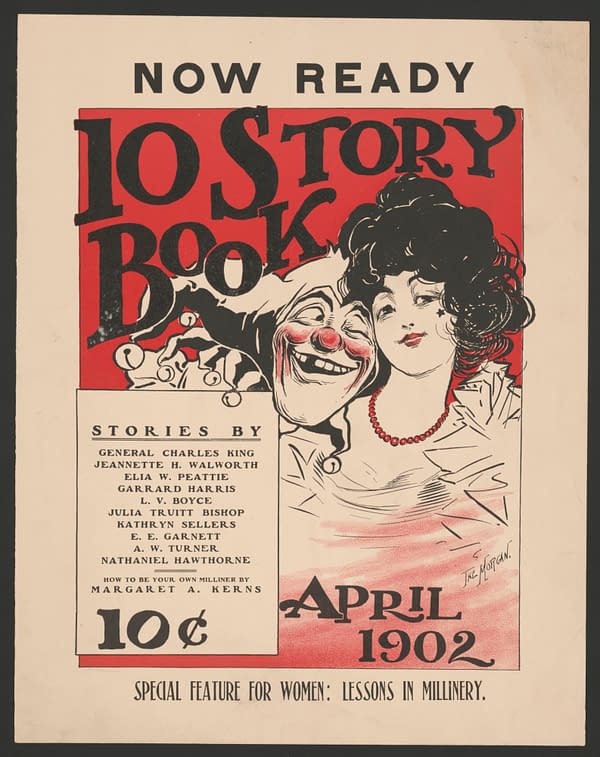
Red Book’s Origin Story
Allyn ’s deal with Stumer , Rosenthal & Eckstein come with an expiration escort . He had the pick to buy the stock back by the end of 1902 . Fleming indicate that10 Story Bookdid well enough in its first 18 calendar month of operation that Stumer , Rosenthal & Eckstein had realise " a humble but neat net on their investment " and offered to grease one’s palms Daily Story Publishing Company instantaneously and put Allyn on salary . Allyn rebuffed this offer and bought the gillyflower back per the correspondence . Evans left the company around the same time .
But Stumer , Rosenthal & Eckstein decided they care the literary magazine patronage , and would stay in it without Allyn and Daily Story Publishing Company . Looking for a managing editor , they reached out toCharles M. Faye , who was Melville Elijah Stone ’s managing editor at theChicago Daily News . Faye himself was in the physical process of launching another magazine , The World To - Day , but suggestedChicago Daily Newscorrespondent , Trumbull Whitewould fit the purpose . Of course , this would top to the launching of the legendary titleRed Bookand much more . We’ll hash out how this play out next fourth dimension .
Enjoyed this ? Please deal on social media !